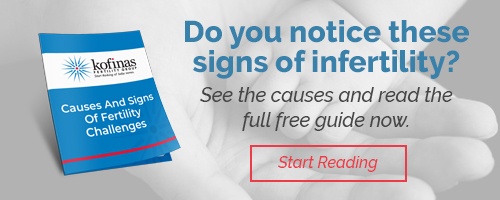Published
Whenever issues with fertility start to surface, many people assume it's time to jump to a more intense procedure, such as in-vitro fertilization (IVF). The eagerness to start a family can push hopeful couples and individuals to presume this is the next step, and the anxiety could lead to them spending thousands of dollars on a fertility procedure that may not be necessary.
This video addresses the myth that fertility clinics only provide IVF services.
If you've been struggling with fertility, it's important to get to the root cause of your challenges. To ensure that you are preparing yourself for a healthy, successful pregnancy, it's best to explore your possibilities with a strategic approach in mind.
If you're curious about what fertility treatment options are available to you before pursuing IVF with a reproductive specialist, then here are 3 treatments to consider that have a proven track record of producing great results:
1. Ovarian Stimulation Medications
It's estimated that female fertility issues account for a third of all infertility cases among men and women, and the main reason why women have a hard time conceiving is because of hormone imbalances throughout the reproductive system.
The female body consists of many hormonal changes during menstruation and ovulation, and when everything is working properly, tracking these stages with accuracy can be a simple endeavor.
However, when hormonal processes are stifled due to PCOS, uterine fibroids, PID, or endometriosis, certain parts of the reproductive organs can malfunction or get thrown off course.
There is good news though:
Correcting any low complexity mishaps like hormone imbalances can be done efficiently with ovarian stimulation medications. By using controlled ovarian hyperstimulation medications (COH), such as various gonadotropins, women can bring regularity and predictability to their cycles and increase their odds of impregnation without getting too involved with advanced procedures.
Successful pregnancies are aided by well-developed ovarian follicles, as well as a release of multiple eggs during ovulation. Plus, there are other medications that help prepare the uterine lining for implantation to further protect the embryo.
2. Intrauterine Insemination
Although it may sound similar to an IVF, intrauterine insemination (IUI), is much less invasive and can lead to promising results for couples as IUI treats infertility with a male factor.
An IUI is a low-complexity procedure that directly injects sperm into the uterus to increase the odds of impregnation. Couples who choose to pursue an IUI typically consist of a female partner with a healthy reproductive system and a male partner dealing with low sperm count or poor sperm volume. The procedure essentially bypasses any failed attempts by transferring a strong concentration of sperm at peak ovulation times, which are monitored through bloodwork and hormone medications.
Overall, the procedure itself is quite minimal. A fertility doctor uses an insemination catheter, a thin flexible tube, to inject the sperm sample, and the female partner will undergo two treatments at 12 and 36 hours after hormone medications are given.
In addition to it being a straightforward experience, hopeful couples or individuals can enjoy moderately high success rates during their first attempts. A fertility specialist will certainly do everything in their power to help you achieve pregnancy right away, but research shows that age and number of tries plays a significant role in the success of an IUI, making it a good first option to pursue.
3. Laparoscopy
After receiving an assessment from a fertility specialist, female partners may discover that certain growths or adhesions are preventing them from getting pregnant. In this case, undergoing laparoscopic surgery is a good way to increase the odds of pregnancy without facing too many complications.
Laparoscopic surgery or laparoscopy, is an outpatient procedure that places a narrow fiber optic scope through a small incision made into the navel of the female partner. Once inside, the device can thoroughly detect the presence of any cysts, fibroids, adhesions, or damages to the reproductive organs and allow doctors to advise an immediate plan to remedy the issues. Cases of PCOS, uterine fibroids, or endometriosis have a major effect on the female's ability to conceive, so removing their presence will surely lead to better results with future attempts.
Another benefit of laparoscopic surgery is that the recovery time after the procedure is fairly quick. After it's complete, women can resume their normal routines in about one week, and any scarring is typically smaller than the size of a keyhole, which will fade over time.
Laparoscopy can offer some tremendous insights into any underlying issues that a female partner is facing, so rather than jumping to any conclusions or uncertain treatment options, consult with a fertility specialist first to see if it's right for you.
What are other common methods of Assisted Reproductive Technology?
There are several different methods of ART:- In vitro fertilization (IVF) means fertilization outside the body. Our doctors treat you with a drug that causes your ovaries to produce multiple eggs, and once they’re mature, your eggs are removed. We then put them in a dish in the lab along with the man’s sperm for fertilization. After three to five days, healthy embryos are implanted in your uterus.
- With zygote intrafallopian transfer (ZIFT), also known as tubal embryo transfer, we also fertilize your eggs in the laboratory, and then transfer the embryo into the fallopian tube instead of the uterus.
- Gamete intrafallopian transfer (GIFT) involves transferring eggs and sperm into a woman’s fallopian tube. Fertilization occurs in the woman’s body rather than in the laboratory.
- Intracytoplasmic sperm injection (ICSI) may be used for couples in whom there are serious problems with the sperm, for older couples, or for those with failed IVF attempts. In ICSI, we inject a single sperm into a mature egg and then transfer the embryo into your uterus or fallopian tube.
- ART can involve the use of donor eggs, donor sperm or previously frozen embryos.
Explore Your Options with Kofinas Fertility Group
Of course, if you've already tried these options or want to ask more questions about IVF, we are always here to help.
However, we know it is important to keep in mind, although pursuing an IVF may be a favorable way to ensure pregnancy, there are several other low-cost, less-invasive procedures that are just as successful. At Kofinas Fertility Group, we believe in offering you many ways to achieve the family of your dreams, and giving you the ability to choose a treatment plan that fits your lifestyle is our utmost concern.
Whether you're just beginning to encounter any challenges with fertility or you've had little success with past experiences, Kofinas Fertility Group is here to support you and lead you in the right direction. Feel free to contact us if you have any questions.




